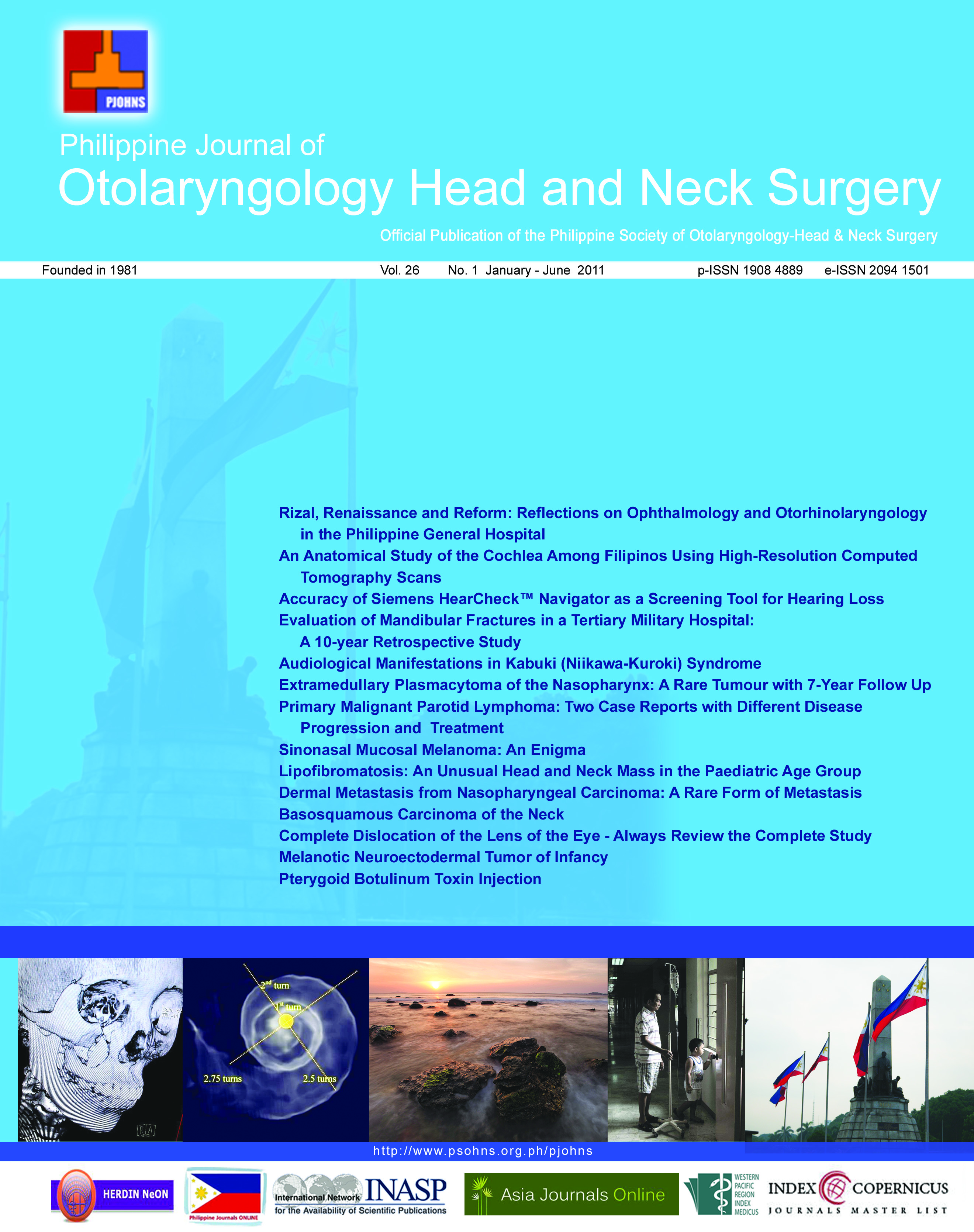Dermal Metastasis from Nasopharyngeal Carcinoma: A Rare Form of Metastasis
DOI:
https://doi.org/10.32412/pjohns.v26i1.607Keywords:
Nasopharyngeal carcinoma, dermal metastasisAbstract
Objective: To report a rare form of metastasis from a primary nasopharyngeal carcinoma, a
creeping form of dermal metastasis.
Methods:
Design: Case Report
Setting: Tertiary Public University Hospital
Patient: One
Results: A 47-year-old male referred for radiotherapy after having undergone a selective neck dissection for multiple cervical lymphadenopathy with histopathologic diagnosis of undifferentiated carcinoma and no known primary underwent a four-quadrant nasopharyngeal biopsy which confirmed the presence of nasopharyngeal carcinoma. Subsequent radiotherapy resolved the primary mass , and a new posterior cervical lymph node that appeared five months after completion of radiotherapy also resolved with additional radiotherapy. He was asymptomatic for two years until he noted thickening of the skin in his left supraclavicular area. A Computed Tomography (CT) scan showed deep cervical adenopathy and skin thickening, and biopsy confirmed dermal metastatic carcinoma. Two courses of radiotherapy to the affected skin and left axilla where a lymph node had developed resulted in resolution and he was referred for chemotherapy.
Conclusion: Dermal metastasis from nasopharyngeal carcinoma is rare and does not present with pathognomonic symptomatology. It may therefore be confused for a benign side effect (dermatitis), not the malignant manifestation that forebodes a bad prognosis. Patients with dermal metastasis should receive treatment, and radiotherapy may play a significant part. Chemotherapy may also play a role in its management.
Keywords: Nasopharyngeal carcinoma, dermal metastasis
Downloads
Published
How to Cite
Issue
Section
License
Copyright transfer (all authors; where the work is not protected by a copyright act e.g. US federal employment at the time of manuscript preparation, and there is no copyright of which ownership can be transferred, a separate statement is hereby submitted by each concerned author). In consideration of the action taken by the Philippine Journal of Otolaryngology Head and Neck Surgery in reviewing and editing this manuscript, I hereby assign, transfer and convey all rights, title and interest in the work, including copyright ownership, to the Philippine Society of Otolaryngology Head and Neck Surgery, Inc. (PSOHNS) in the event that this work is published by the PSOHNS. In making this assignment of ownership, I understand that all accepted manuscripts become the permanent property of the PSOHNS and may not be published elsewhere without written permission from the PSOHNS unless shared under the terms of a Creative Commons Attribution-NonCommercial-NoDerivatives 4.0 International (CC BY-NC-ND 4.0) license.



